
Every year, when there is busy season for sand and dust storm, large scale weather of this kind will pose huge hazards to human health and property. People residing in sandstorm-affected areas urgently call for establishing regional and specialized monitoring and warning center, and Regional Specialized Meteorological Center with activity specialization on Atmospheric Sand and Dust Forecast (RSMC-ASDF) of World Meteorological Organization (WMO) came into being.
In May, 2017, RSMC-ASDF Beijing (hereafter referred to as the Center) was approved by WMO and the Center is located in Beijing. For two years, the Center has prolonged sand and dust forecast time span from 3 days to 5 days, with a higher spatial resolution. The forecast area is expanded from domestic areas to Asian areas, with forecast accuracy up from 60% to 80%.
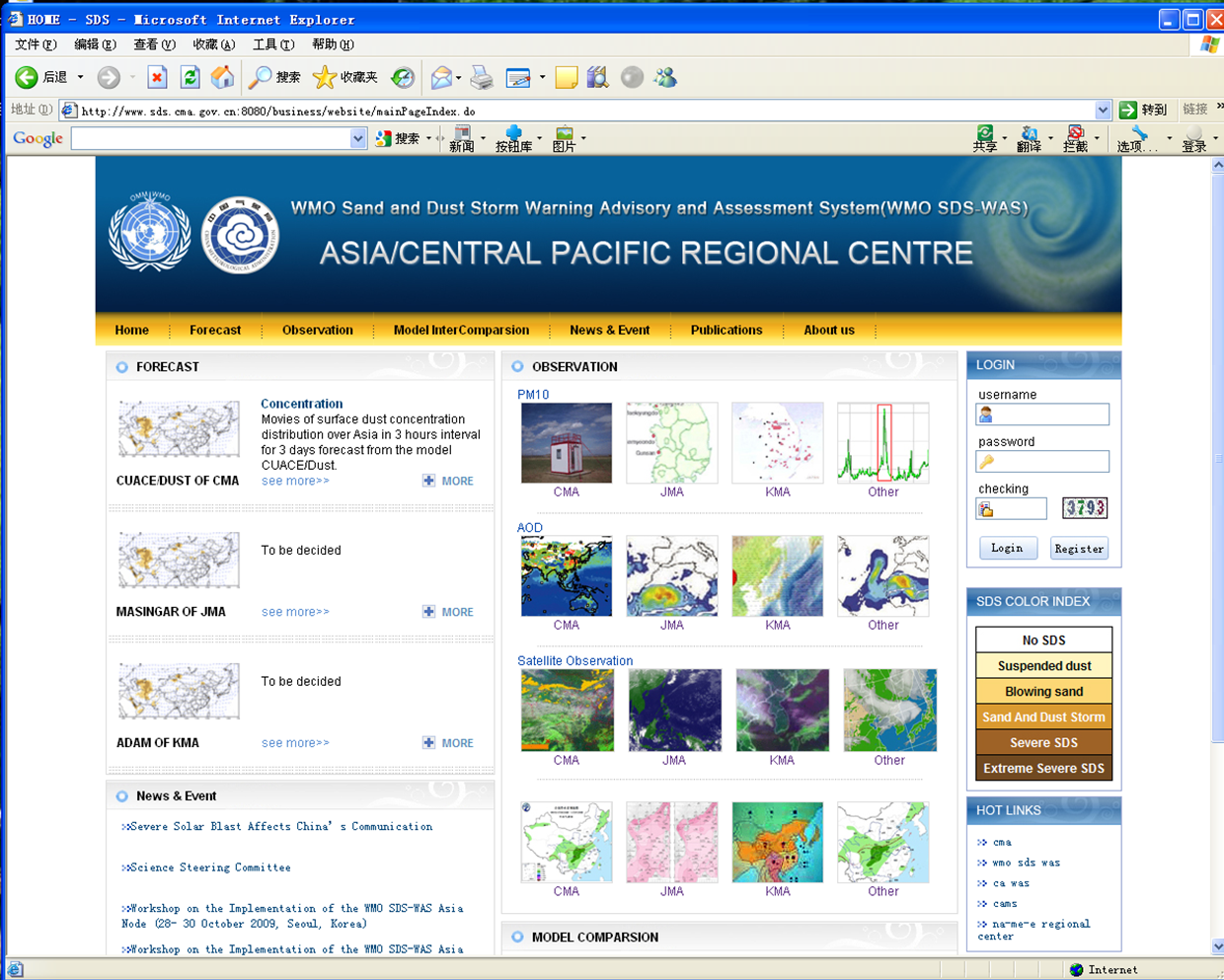
Web portal of Asian Node Centre
Mr. Gui Hailin, Senior Engineer from Environmental Meteorological Centre of China Meteorological Administration (CMA) stated that Northwest China and North China, Republic of Korea, and Japan are within the areas affected by sand and dust from Central Asia. For many years, China has done large quantities of work revolving around regional forecast service of sand and dust weather and provided warning for Asian countries.
Operated by National Meteorological Center (NMC), the Center is the second regional specialized meteorological center recognized by WMO since RSMC Beijing, 1997.
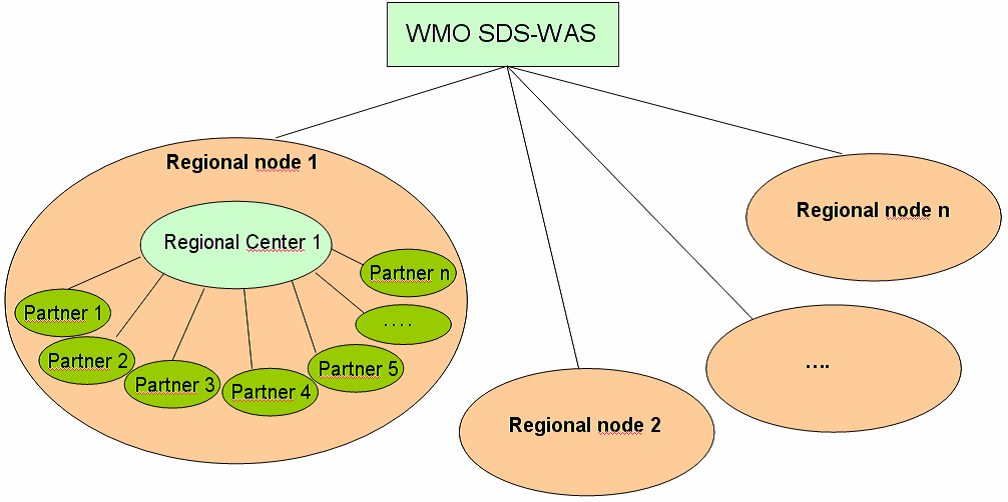
International network of SDS-WAS
Prior to 2017, RSMC-ASDF under the framework of WMO Commission for Atmospheric Sciences focused on scientific research and warning advisory. As scientific research prowess of sand and dust forecast and early warning is reinforced, this field makes the transition from scientific research to operational frontier.
Up to date, within the global scale, there are only 2 RSMC-ASDFs respectively in Barcelona and Beijing. This is not only associated with key monitoring and forecast areas of global scale sand and dust, but also linked to sand and dust weather forecast capacities of these two centers.

Near-Real Time SDS Retrieval for Asian SDS from FY-2C meteorological satellite
Currently, China has made strides in terms of physical and chemical properties, source area location, total emissions, transport and deposition channels and forms, changes after deposition, and feedback effect of climate change on sand and dust. CMA has independently developed satellite quantitative remote sensing technology and operational system of sand and dust storm distribution and intensity based on Fengyun-2 series satellites, enabling China to harness geostationary meteorological satellites to conduct dynamic monitoring and analysis of sand and dust storm structure and evolution features of Asia.
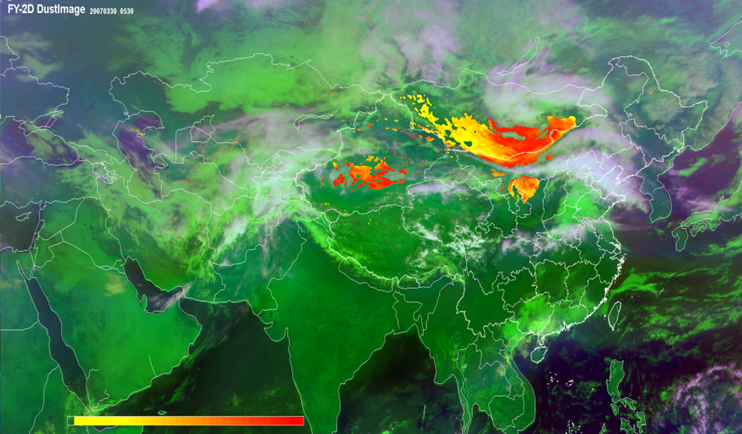
Near-Real Time SDS Retrieval for Asian SDS from FY-2D satellite
CMA has developed three-dimensional variational numerical assimilation system of sand and dust storm in Asia, and fully harnessed ground-based observation and real-time remote sensing data of FY-2 series satellites. This system is the only assimilation system that can conduct assimilation of ground based and space based sand and dust storm data in the meanwhile, and the only one assimilation system in the world that can engage in real-time sand and dust storm numerical weather prediction. CMA has also come up with the first actually operational system in the world, CUACE/Dust (Chinese Unified Atmospheric Chemistry Environment for Dust). Through over one decade’s endeavor, China has become one of the countries which have realized sand and dust storm numerical weather prediction operation.
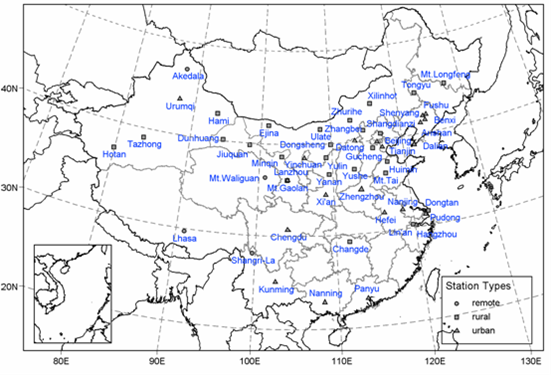
CMA Aerosol Remote Sensing Network
For two years, NMC has joined hands with personnel from China Academy of Meteorological Sciences (CAMS), National Satellite Meteorological Center (NSMC), Beijing Climate Center (BCC), National Meteorological Information Center (NMIC), and MOC to undertake the construction task of the data sharing platform of the Center.
Through this platform, China can share sand and dust monitoring, forecast and model verification products, provide forecasting products of aerosol ground surface concentration, optical thickness, dry (humid) deposition at 3-hour interval for the future 3 days to 5 days and products of sand and dust monitoring of FY-4A meteorological satellite and visibility based on ground-based observation, sand and dust aerosol.
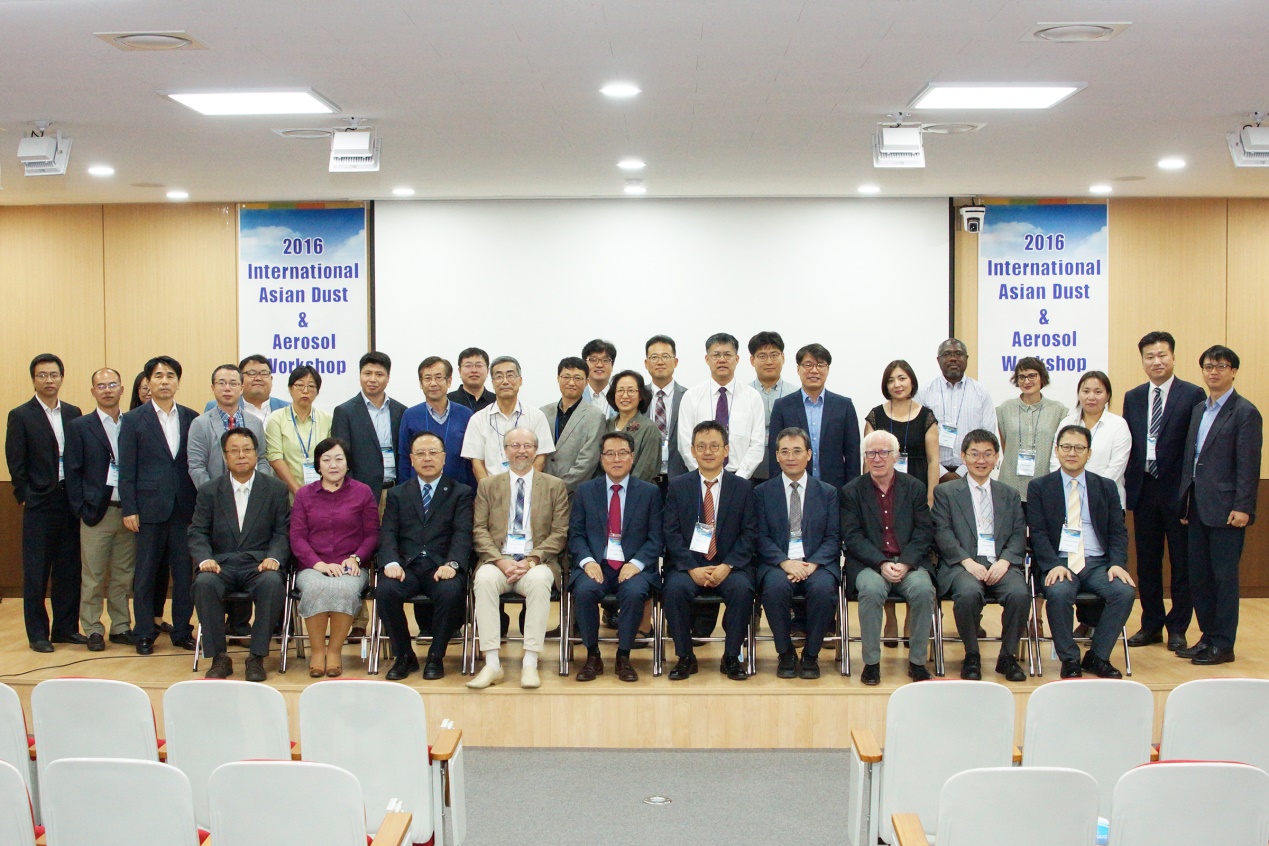
2016 International Asian Dust &Aerosol Workshop
The Center has also established 29 specialized sandstorm monitoring stations including PM10 concentration which cover most portions of northern China, and completed the donation of 3 sand and dust storm stations for Mongolia and 1 station for Kazakhstan. Through consolidating regional international cooperation, conducting sand and dust storm forecast training, the Center strives to enhance sand and dust storm prediction technology and service capacities of Asia, especially countries along “Belt and Road” territories.
Nowadays, the data sharing platform of the Center encompasses sand and dust numerical weather prediction products from China, Republic of Korea, Japan, Finland, the United States, and European Centre for Medium-Range Weather Forecasts. The platform also harnesses multi-model ensemble forecast with the optimal algorithm, provides more accurate forecasting products for the users, and furnishes technical support for sand and dust prediction and early warning of regional countries.
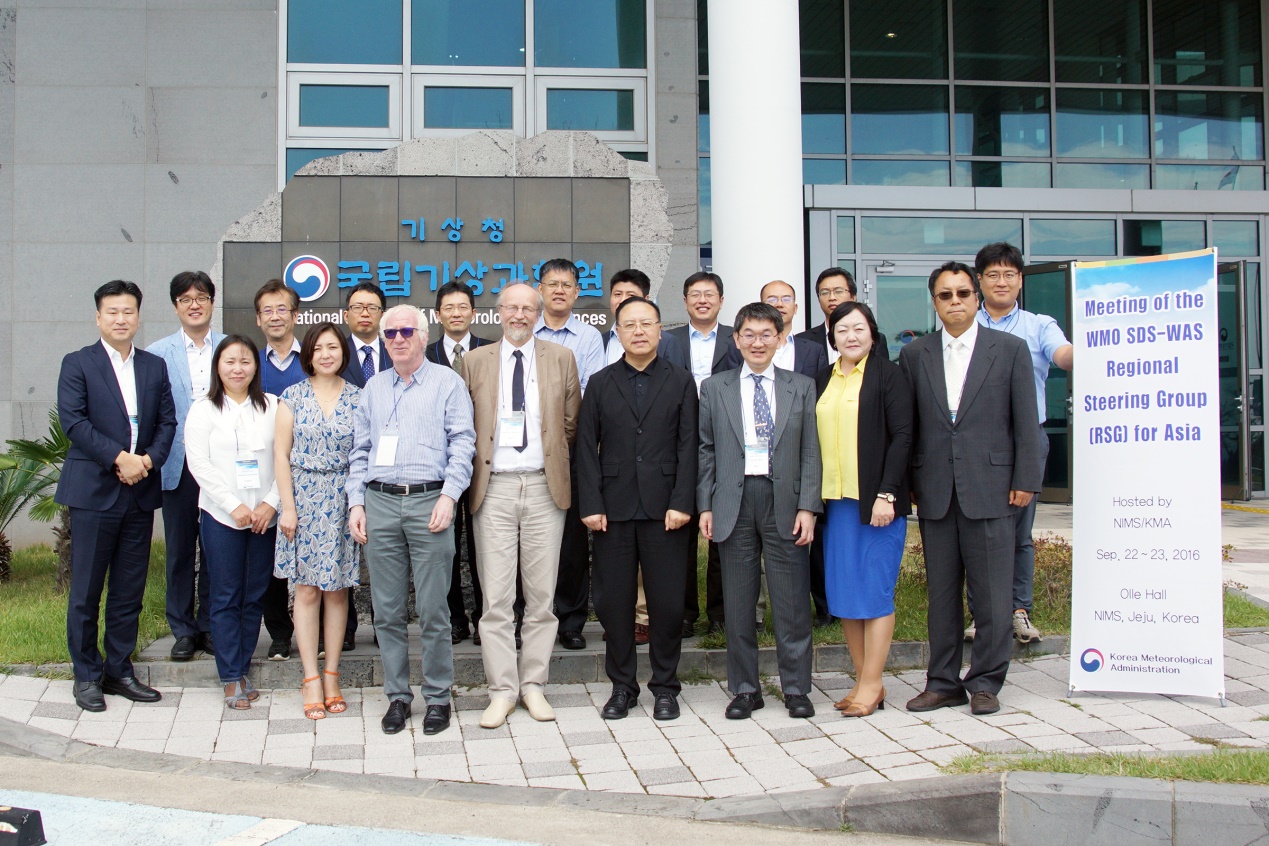
Meeting of the WMO SDS-WAS Regional Steering Group (RSG) for Asia
Furthermore, the Center has also set up sandstorm warning, advisory and evaluation system, and ramped up forecasting, warning and disaster preparedness capacities of countries vulnerable to sand and dust storm weather through improving the sand and dust storm model. At present, over 15 countries and organizations conduct daily correction of sand and dust storm model forecasting products.
On the morning of May 8, Gui Hailin, took over the work from the on-duty forecaster of the centre, and detected a huge cyclone system in Mongolia as soon as he turned on the computer. Sensibility cultivated through long term work made him realize that there might be a large scale sand and dust storm weather process.
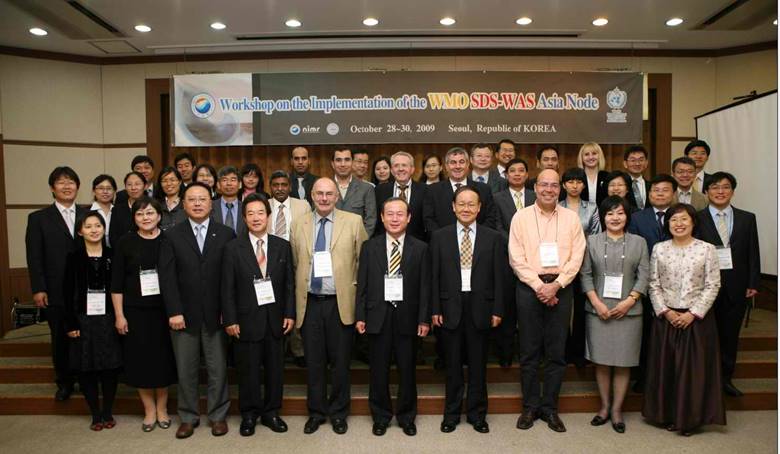
Workshop on the Implementation of the WMO SDS-WAS Asian Node
He swiftly called out the satellite cloud images, learned of the movement track of the cyclone, and flipped through data like precipitation and temperature in northern China and conducted repeated analysis and verification. Due to the weak cold air, the first large scale sand and dust weather process this year was late and characterized by little in the earlier stage and more in the latter stage, but it did not signify that the sand and dust weather was weak. Timely informing the public and the government with prediction results are conducive to adopting countermeasures in advance.
From February 18 to 19, 2018, sand and dust storm broke out in southwestern Iran. At that time, scale 7-8 gale blanketed this area. And the dust concentration in Abadan and Khorramshahr was about 66 times higher than the allowable limit, and the visibility level abruptly plummeted to about 100 meters. The Center made accurate prediction 24 hours in advance and released relevant forecast and warning through the website.
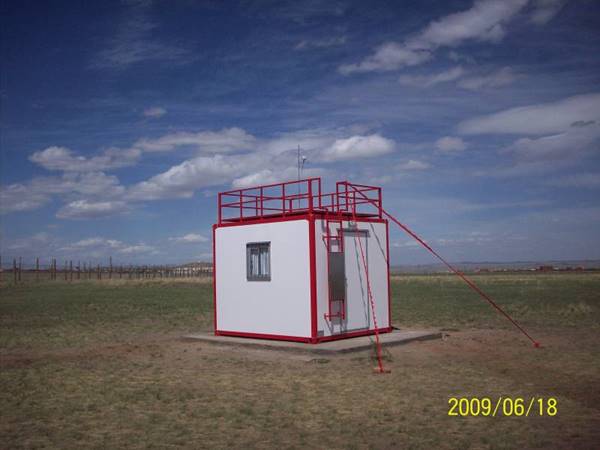
CMA helps set up container facility in Arvaikheer, Mongolia
Republic of Korea and Japan, as main users of the system, have harnessed sand and dust forecasting products of the Center, enhanced the prediction accuracy of floating dust weather triggered by long distance transport from Central Asia, and markedly elevated the satisfaction level of the public.

CMA helps set up container facility in Underkhaan, Mongolia
Nowadays, the Center is continuously providing potent scientific support for various countries in terms of sand and dust disaster preparedness. In the next step, the Center plans to further improve the sand and dust model, reinforce sharing of monitoring and forecasting products of this kind, and strengthen training of operational personnel. In the meanwhile, the Center is actively exploring the construction of long term global forecasting system of sand storm.
Editor: Liu Shuqiao